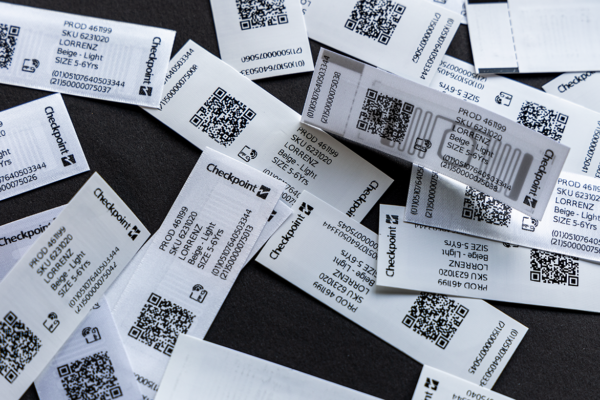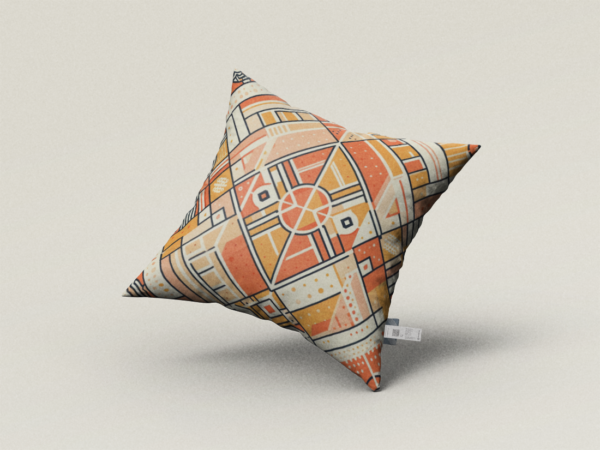Have you been underusing RFID pocket tags? Despite their name, these discrete and powerful intelligent labels can be embedded into all sorts of products to bring you the benefits of RFID. Our RFID experts are here to reveal why these tags are more versatile than the name suggests, plus three little-known use cases that could boost your ROI.
But first, the lowdown on RFID pocket tags…
Pocket tags — much more than a tag for a pocket, as it turns out. These fabric labels are typically (but not always!) discreetly sewn into a lining, seam, or pocket to deliver all the benefits of RFID without any risk of the inlay being accidentally separated from the garment.
Read: 4 reasons to embed an RFID tag in clothes
Pocket tags are easy to install and simple to make, so they're usually a go-to for brands who want to dip a toe into the world of embedded RFID. There are tons of use cases for embedding RFID into your products using a solution like pocket tags. For example, embedding your RFID inlays means you have fewer limitations on the inlay footprint; you can take your pick from our RFID portfolio and opt for a bigger inlay with a longer read distance.
Thinking of using RFID to move your brand towards the future of retail? Pocket tags can help you there, too! Because embedded inlays are difficult to remove from the garment, they're a fab option to boost loss prevention. They can be used for frictionless checkout and product authentication, too. The RFID stays with your product in a way the hang tag can't!
Despite what the name suggests, pocket tags can be used to tag loads of different products. You just need to think outside the box — something our RFID team is particularly great at. Here are some ways we use pocket tags across other products when we need a smart solution to a tagging problem…

Read: What is RFID? Everything you need to know
Pocket tags: 3 uses you (probably) haven’t considered
1. Shoes
Bet you didn’t know RFID pocket tags can be used for shoes tagging! They work especially well discreetly sewn inside trainer tongues and can be teamed with an RFID sticker added to the box. Embedding RFID tags into each shoe can limit shrinkage, facilitate self-checkout, and can even be used to keep pairs together — our ItemOptix™ for Retail software can even tell left shoe from right.
Pocket tags are one of many options where shoes are concerned. For trickier jobs, you can try our Gemini Tags®, which use twinned QR codes (one on the item and one on the tag or box) to give important product information.
Read: How to deliver a ‘seamless’ shopping experience in 2024
2. Handbags
Since RFID pocket tags are designed to be sewn into seams, there’s no reason you can’t pop them into internal handbag seams or linings. With your inlays safely hidden inside your bags, you can reduce shrinkage rates, make your bags self-checkout ready, and — most exciting of all — give your customers a way to authenticate luxury goods. Yep, that’s right! By opting for a dual technology inlay that combines an NFC chip with RFID, customers can use a smartphone to scan and authenticate items themselves.
Read: How RFID can work hard for you after the sale
3. Soft furnishings and homeware
Hard tags can ruin the vibe when it comes to soft furnishings. Customers love to interact with products before they buy, and this is one product type that merits a more discreet tagging option. And wouldn’t you know it — pocket tags are ideal to tag homewares!
Sew pocket tags into the seams of cushions, blankets, towels, and bedding to turn some of the hardest items to tag into a total breeze! Better yet, your products will arrive in store pre-tagged, so your team won’t have to spend hours hard tagging or stickering the stock. Job done!

How to get started with pocket tags and RFID tech
As we mentioned earlier, pocket tags are one of the most popular forms of embedded RFID because they’re so easy to install and use. However, that doesn’t mean it’s not beneficial to have an RFID partner in your corner.
Our RFID team have decades of experience using the technology and have even invented inlays for specific use cases. That means you’ve got a squad of experts guiding you towards the best inlays and tagging formats for your products and business goals. If you didn’t know pocket tags could work inside bags and shoes, imagine what else our team could show you!
Teaming up with a global RFID partner like us means working with experts who know the tech inside and out. They can help you close the gap and tag that final, tricky 10 percent of st ock so you get maximum ROI on your project. Checkpoint is a global, vertically integrated partner, too — that means we’ve got people worldwide to help train your manufacturers on the new tech and implement it with ridiculous ease.
Are you wondering how much more pocket tags could be doing for your brand? Get in touch with our team and tap into our decades of RFID knowledge. Bring us your toughest RFID tagging challenges, and let’s find your ideal solution together. For more information on pocket tags and RFID, visit our RFID knowledge hub .
